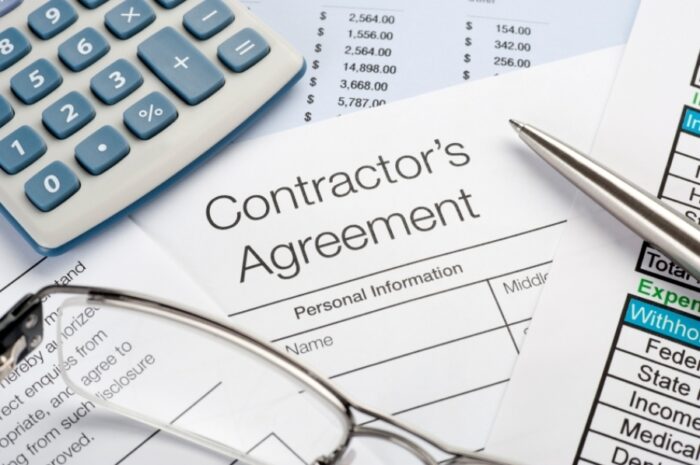Contractors and small construction companies know that when customers don’t pay, it can seriously derail your project and your company’s cash flow. There are five common reasons for outstanding invoices, however, and these can often be avoided. Let’s take a look at these reasons and the best ways to prevent and address them.
1. Unexpected Billings
Clients can feel blindsided by your invoice if you didn’t have a clear discussion about pricing upfront. Even if your billings are justified, the surprise nature of them can make customers feel that they’re being unfairly charged.
Solution: Have a sit-down with your client before the start of their project to discuss cost estimates and your billing methods. Present them with an itemized cost estimate and all other information documents related to billing. If extra expenses come up during the course of the project, get approval from your client beforehand and promptly provide them with a change order request to sign. Make sure to save all documents in a folder that you’ve organized for each of your clients.
2. Lost Invoices
Your invoice never arrived, or your client can no longer find it. In either case, a client can’t pay an invoice that they don’t have.
Solution: Ask clients what’s the most convenient method of invoice delivery for them (e-mail, traditional mail, etc.). Delivering your invoice in person will guarantee that your client received it, but sending your client’s invoice through email or project management software can be effective and more convenient, depending on your customer’s preferences.
Send regular reminders to forgetful clients, and include a copy of the invoice with each of these reminders. Don’t forget to keep records of all communication and invoices sent to clients.
3. Confusion or Disagreements Over Payment Period
Remember that your invoices should specify the date by which the payment is due. Sometimes clients assume that they have weeks or even months to pay an invoice. Meanwhile, your business falls into dire straits because you were counting on prompt payment.
Solution: Make sure you’re on the same page about payment timelines before signing any contracts. When discussing a reasonable payment period, you may discover that you and your potential customer have very different ideas of what that means. You’ll either need to come to a mutually beneficial compromise, or turn down the project. It’s not worth taking on a client who insists on a payment timeline that will endanger your business.
You can avoid any further confusion or disagreements by including your payment terms on all change orders, contracts, and invoicing.
4. Dispute Over Quality of Work
Sometimes clients are simply unsatisfied with the work you’ve completed. Whether their assessment is fair or not, you’ve got a client who feels that they didn’t get what they’re being charged for.
Solution: If you find any legitimacy in their claims, make the necessary corrections or offer compensation in the form of other work or a discount on their bill. Even if their claim doesn’t have much basis, it’s often easier to get the client to agree to a lowered payment than the full sum.
In the case of milestone payments, there can also be dispute over how much work has actually been completed. The best way to avoid such situations is to break your project up into distinct phases with a clear checklist of what’s to be completed during each phase. This makes it far easier to keep track of progress.
5. Inability to Pay
Most contractors will run into at least one customer who claims an inability to pay only after they’ve been presented with the bill. It sometimes comes as a complete surprise, but can often be avoided.
Solution: Verify your client’s ability to pay before signing contracts. Ask them to provide pay stubs, bank statements, or mortgage statements. Ask potential customers if they foresee any issues with being able to pay your quoted costs on time.
If you’ve already done work for the client, see if you can work out a payment arrangement. This is usually more successful than demanding full and immediate payment.
Handling Collections
If you’ve tried the solutions above but your client still hasn’t paid, then it’s time to consider debt collection.
Issue your collection notices by phone or in person. Be firm but respectful, and make an effort to build understanding between you. Explain how their lack of payment impacts your business and your crew. Sometimes, getting a customer to consider your situation is all it takes to get your payment.
If communication has stopped or is unsuccessful, you’ll need to get outside authorities involved.
File a Contractor's Lien
You can file a lien against the customer’s property through the county clerk’s office. A lien often requires the property owner to clear the debt before they can sell or refinance the property. Because they’re such a nuisance, many owners will simply pay the debt. If not, you can foreclose on the lien.
Hire a Collection Agency
A collection agency will work to collect the debt for you in exchange for a percentage of the amount owed. Some agencies will also buy the debt from you.
Sue for Breach of Contract
Contractors can sue delinquent customers in civil court or small claims court. You’ll need to provide evidence that you fulfilled your side of the contract and the customer failed to fulfill theirs. Such evidence can include the contract itself, before and after photos of your work, expenses you made, and payment collection notices sent to the customer.
Claim a Tax Reduction
If all else fails, see if you can claim the loss as a tax reduction. The Tax Code IRC 166, Reg. 1.166 allows business owners to claim parts of such losses on tax returns for the corresponding tax year.
General Prevention
Develop a standard policy for handling overdue payments and provide a summary of it to your customers alongside your initial invoice. Be sure to use clear, simple language in this policy, your invoices, contracts, and cost estimates. Industry jargon and “legalese” can lead to confusion and misunderstandings. Be certain that the contract and its amendments specifies the agreements you and your customer made.
The next time you deal with a customer who doesn’t pay, try one of the strategies outlined in this post. We hope that our advice will help you successfully prevent client payment problems in the future, and more effectively deal with those that do arise.



